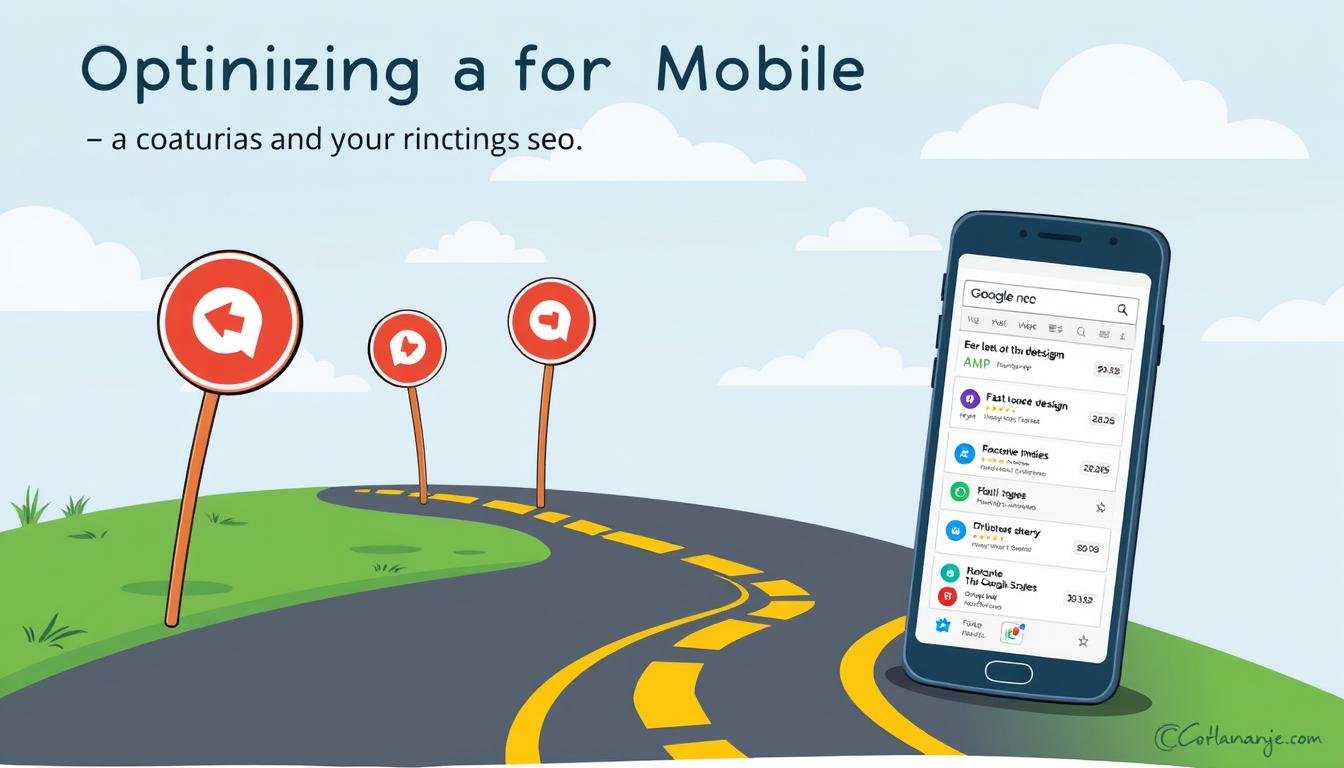Best Practices for Mobile SEO Optimization
Did you know over 58% of the world’s web traffic comes from mobile devices? This fact shows how crucial it is for businesses to use good mobile SEO strategies. Having a site that works well on mobile is now a must. Google looks at your site’s mobile version first, so making it user-friendly is key. We’ll cover the main ideas of making your content work well on mobile, helping you keep users interested on their phones.
Key Takeaways
- More than 58% of global web traffic comes from mobile devices, emphasizing the need for mobile optimization.
- Google utilizes mobile-first indexing, impacting how websites are ranked in search results.
- Responsive web design is preferred for creating a seamless mobile experience.
- Fast loading times are critical for maintaining user engagement on mobile sites.
- Consistent content across mobile and desktop platforms is vital for optimizing rankings.
- Understanding voice search trends can enhance your mobile content strategy.
Understanding Mobile SEO
Mobile SEO is key to making websites work well on mobile devices. It ensures a smooth browsing experience. It focuses on design and content for smaller screens. As more people use their phones for the web, knowing about mobile SEO is vital for online success.
Defining Mobile SEO
The mobile SEO definition is about making online content and structures work for mobile users. It includes factors like screen size, speed, and easy navigation. A site that’s optimized for mobile is not just easy to use but also helps in ranking higher in search engines.
Importance of Mobile SEO in Today’s Digital Landscape
The role of mobile SEO is huge. Over 58% of Google searches come from mobile, changing how businesses reach out to people. With mobile-first indexing, Google ranks the mobile site first. This shows the importance of having a strong mobile strategy as most shoppers prefer mobile devices.
Fast-loading pages improve the mobile experience and keep visitors on the site. A one-second delay can lead to a 20% drop in conversions. Making mobile speed and ease a priority is key to keeping visitors and turning them into customers.
Why Mobile SEO Is Crucial for Your Business
Mobile SEO has changed how businesses show up online. Google now looks at mobile sites first, making mobile optimization key. It’s not just for better visibility but also to meet what users want. With more people using mobiles than desktops, it’s crucial to understand this change.
Mobile-First Indexing by Google
Google’s move to mobile-first indexing is a big deal for SEO. It means Google looks at the mobile site first for indexing and ranking. Since many users visit sites on smartphones, not optimizing for mobile can hurt your search ranking.
Google likes responsive design. This means the site works well on mobile and has the same content on all devices. It keeps the site easy to use and consistent for everyone.
Impact on Local Searches and Consumer Behavior
Local searches have changed a lot with mobile. Now, 62 percent of local searches give different results on phones than on computers. It’s important to make sure your business info is the same everywhere for local searches.
With 82% of smartphone users using search engines to find local businesses, being mobile-friendly is a must. Companies that focus on mobile can improve user interaction and get more people to visit their stores.
| Factor | Mobile Search | Desktop Search |
|---|---|---|
| Consumer Traffic | More than 50% | Less than 50% |
| Search Behavior | Predominant for local searches | Less focused on local |
| Speed Requirements | Under 3 seconds | Varies, typically longer |
| User Experience | Crucial for engagement | Important, but less critical |
Mobile SEO vs. Desktop SEO
It’s crucial for businesses to know the differences between mobile and desktop SEO. Users act differently on each device, which changes how SEO should be done. By understanding these differences, companies can make their SEO better.
Key Differences Between Mobile and Desktop SEO
Mobile and desktop SEO have some big differences. Mobile devices show fewer search results because of their small screens. This means focusing on short content and specific keywords is key for mobile searches.
These searches often use voice commands and look for local info. Desktop searches are more about typing and showing off detailed content.
- User Behavior: Mobile users use voice searches with tools like Amazon Alexa and Google Home. Desktop users type their searches.
- Content Presentation: Mobile searches love images and videos. Desktop searches show off knowledge panels and snippets.
- Ranking Criteria: What makes a page rank changes between mobile and desktop. It depends on the device’s setup and where the user is.
- Search Results Display: Mobile shows one or two results at a time. Desktops can show up to five text results together.
Adapting Strategies for Mobile Audiences
To reach mobile users, SEO needs to adapt. This means making websites easy to use and fast. Focusing on local searches is also key because people use their location more in searches.
Now, over 70% of internet time is spent on mobile devices. This shows how important mobile SEO is. Having a good SEO plan for both mobile and desktop can really help with rankings and traffic. Using a mobile SEO checker is a big help in balancing these efforts.
Best Practices for Mobile SEO Optimization
To boost your mobile SEO, start with responsive web design. This method lets one URL work for both mobile and desktop users. It cuts down on duplicate content and makes loading faster. Plus, it makes sure your content looks good on any screen size.
Utilizing Responsive Web Design
Page speed matters a lot, as 53% of visitors leave if a site takes over three seconds to load. Using Content Delivery Networks (CDNs) can make pages faster by storing your content on many servers. Also, making your site run smoother on mobile can improve user experience and SEO rankings.
Content Consistency Across Platforms
Keeping content the same across all platforms helps with branding and trust. But, only 42% of users feel they get a consistent experience. Making sure your titles, URLs, and meta descriptions are clear can help more people find your site on mobile. This consistency can make your business look more reliable and satisfy users more.
Mobile Keyword Research Strategies
Mobile keyword strategies are key, especially with shorter, location-based searches. Focusing on local SEO and using Schema.org structured data can help you stand out in search results. Adjusting your keywords for mobile can boost your rankings and meet your audience’s changing needs.
Source Links
- Mobile SEO: Tips & Best Practices
- An In-Depth Guide And Best Practices For Mobile SEO
- The Complete Guide to Mobile SEO: 8 Tips & Best Practices
- Mobile SEO: Top Tips to Improve Your Mobile Rankings
- Mobile SEO
- Mobile SEO: The Definitive Guide
- BruceClay – Mobile SEO and UX Optimization Tips
- Why Is Mobile SEO Important? | Hennessey Digital
- Mobile SEO vs. Desktop: What’s The Difference | Quattr
- What’s the Difference Between Mobile SEO and Desktop SEO?
- 9 Best Practices for Mobile SEO Optimization
- Mobile SEO
- The DIY Mobile SEO Guide: How to Be Mobile-First in 2024








